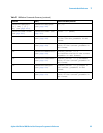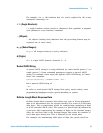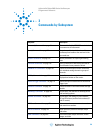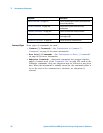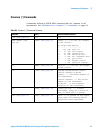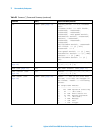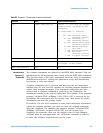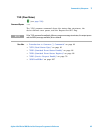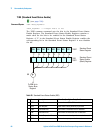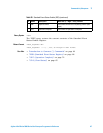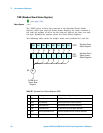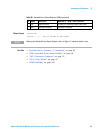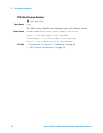
Commands by Subsystem 3
Agilent InfiniiVision 5000 Series Oscilloscopes Programmer's Reference 63
Introduction to
Common (*)
Commands
The common commands are defined by the IEEE 488.2 standard. They are
implemented by all instruments that comply with the IEEE 488.2 standard.
They provide some of the basic instrument functions, such as instrument
identification and reset, reading the instrument setup, and determining
how status is read and cleared.
Common commands can be received and processed by the instrument
whether they are sent over the interface as separate program messages or
within other program messages. If an instrument subsystem has been
selected and a common command is received by the instrument, the
instrument remains in the selected subsystem. For example, if the program
message ":ACQuire:TYPE AVERage; *CLS; COUNt 256" is received by the
instrument, the instrument sets the acquire type, then clears the status
information and sets the average count.
In contrast, if a root level command or some other subsystem command is
within the program message, you must re- enter the original subsystem
after the command. For example, the program message ":ACQuire:TYPE
AVERage; :AUToscale; :ACQuire:COUNt 256" sets the acquire type,
completes the autoscale, then sets the acquire count. In this example,
:ACQuire must be sent again after the :AUToscale command in order to
re- enter the ACQuire subsystem and set the count.
n/a *STB? (see page 81) <value> ::= 0 to 255; an integer
in NR1 format, as shown in the
following:
Bit Weight Name "1" Indicates
--- ------ ---- ---------------
7 128 OPER Operation status
condition occurred.
6 64 RQS/ Instrument is
MSS requesting service.
5 32 ESB Enabled event status
condition occurred.
4 16 MAV Message available.
3 8 ---- (Not used.)
2 4 MSG Message displayed.
1 2 USR User event
condition occurred.
0 1 TRG A trigger occurred.
*TRG (see page 83) n/a n/a
n/a *TST? (see page 84) <result> ::= 0 or non-zero value;
an integer in NR1 format
*WAI (see page 85) n/a n/a
Table 28 Common (*) Commands Summary (continued)
Command Query Options and Query Returns



